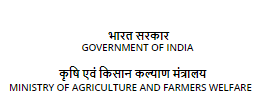Technology for production of functional food ingredient from chicken liver
Background:
The total meat production in India is 8.11MT out of which about 50% is contributed by poultry meat (4.06MT). Poultry is one of the fastest growing segments of the agricultural sector in India with around 8% annual growth rate. Gizzard, Heart and Liver constitute about 5-6% of the carcass weight in broilers. For 4.06 MT poultry meat, approximately 0.2-0.25MT of these by-products is produced. These by-products are collected and sold separately to reduce the risk of Salmonella and Campylobacter cross contamination. These by-products are considered as low-value products, and many a times it becomes difficult for industries to divert their efforts to utilize or dispose in a scientific manner:
Because of their many functional and nutritional properties, the interest in the use of meat/poultry by-products as food source and food ingredient has been increasing in recent years. Chicken liver, an important edible poultry by-product, constitutes approximately 2-2.5% of live weight of chicken. Chicken liver is a rich and economical source of many essential nutrients for humans, including protein, fat, minerals and vitamins. Protein content of chicken liver is about 24.6%.
In many countries including India, chicken liver has low commercial value and is less processed and underutilized compared with the liver of other animals. The use of chicken liver to produce high quality proteins would not only be beneficial for the industry, but also provide protein products with high nutritive value. Therefore, the key problem is to find economic ways to transform these underutilized protein resources into human foods, to meet the practical production demand:
Technology Details:
The technology of producing poultry liver protein isolate as functional food ingredient resulted in effective and economic utilization of poultry liver for edible propose as functional food ingredient. This product not only increases the nutritional quality but it also resulted in enhanced functionality of food items:
Protein isolates were prepared from the chicken liver through the pH shift method and isoelectric precipitation. Techno-functional properties were determined for isolates and were compared with that of raw liver powder. The isolation process increased the protein content and reduced the fat content which in turn enhanced properties like emulsification, foaming, water, fat absorption, and so on:
On comparing acidic and alkaline isolation, the latter gave satisfactory results. Best properties were obtained for pH 2 from acidic isolation and pH 11 for alkaline isolation and hence these isolates were processed further with enzymatic hydrolysis with Alcalase:
The time of hydrolysis procedure was optimized to be 6 hours under optimum pH (pH 8) and temperature (55°C) conditions. Techno-functional characterization of hydrolysates implied that the properties mainly depend on the molecular weight of proteins. Hence some properties like emulsification and foaming decrease while others like bulk density and water absorption increase on hydrolysis. Very significant antioxidant activity was obtained on ABTS and DPPH assay and it was found highest for 6th-hour hydrolysates. Incorporation of chicken liver protein hydrolysate in meat emulsion resulted in significant improvement in physico-chemical properties and maintained better quality attributes during refrigerated storage. Thus, from the current study, it was concluded that both isolates and hydrolysates can act as multi-functional food ingredients for the future food processing industry.


